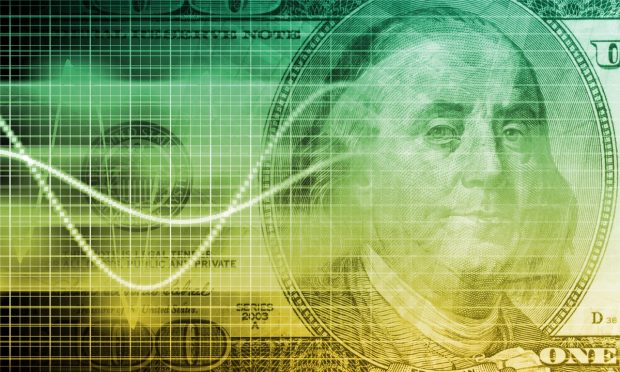Earnings Season Commentary Signals Pullback in Lower-Income Consumers’ Spending

Consumer spending — in particular, spending by lower income consumers — may be running out of gas.
It’s an often-cited stat that spending by individuals and families drives roughly two-thirds of GDP, and is thus the engine that drives growth, or stymies it.
And as for the troubling signs: In at least a few earnings reports, from marquee names, a pullback in spending has been noticeable, and has been tied, directly, to the inflationary environment.
Exhibit A, at least so far this earnings season, rests with PayPal, where management commentary warned that consumer spending has been challenged.
During the call, CFO John Rainey said eCommerce growth is “more muted” headed into the current year, marked by a “pullback in spending by lower-income consumers” that impacted the company, chiefly in the form of slowing growth. He noted, too, that inflation is having an impact on personal consumption, and stated that even PayPal is not “immune to the vagaries of the economy.” Higher-income cohorts make up less of the company’s installed base, management has observed, and so the impact of a pullback by lower income consumers is significant.
Read also: PayPal’s Post-Earnings Dip Reflects Brewing Battles Over BNPL, in-Person POS
Elsewhere, and though not explicitly pointing to consumer spending, there is a read across from Facebook’s (now Meta Platform’s) own earnings. Management noted during commentary on that call that advertisers are seeing impact and headwinds from inflation. That makes doing business more expensive, of course, and in fact may stretch advertising budgets a bit thin, but the read across is also that end consumers are tightening the purse and wallet strings a bit.
General commentary these, and other, earnings calls, do not give us a sense of just how much consumers have reduced spending or on what.
PYMNTS’ own data hints at the struggles consumers across all income brackets, but in particular, lower-income brackets, face. As noted here recently, 54% of U.S. consumers live paycheck to paycheck, which in effect means that they meet expenses when the paycheck comes in.
Read More: 5 Facts About Paycheck-to-Paycheck Living Reveal Complex Nature of Financial Security
Drill down a bit, and we find that of those consumers making less than $50,000 annually, who define themselves as living P2P (we’ll use shorthand here), 28% state they are not living P2P, which means, of course, that 72% are. Roughly a third of lower income consumers state they are living P2P in an environment where they struggle to pay the bills.
Inflation remains a key concern for P2P consumers, a worry that is cited by 82% of respondents.
No surprise, then, that bills may be top of mind, and discretionary spending may fall a bit by the wayside.
We note that the comments from PayPal et al do not necessarily dovetail with the comments we have seen from the banks and the credit card companies, where spending on debit and credit seemed to continue unabated into the end of January. Those companies’ demographics may be less pressured than lower-income consumers, at least for now.
